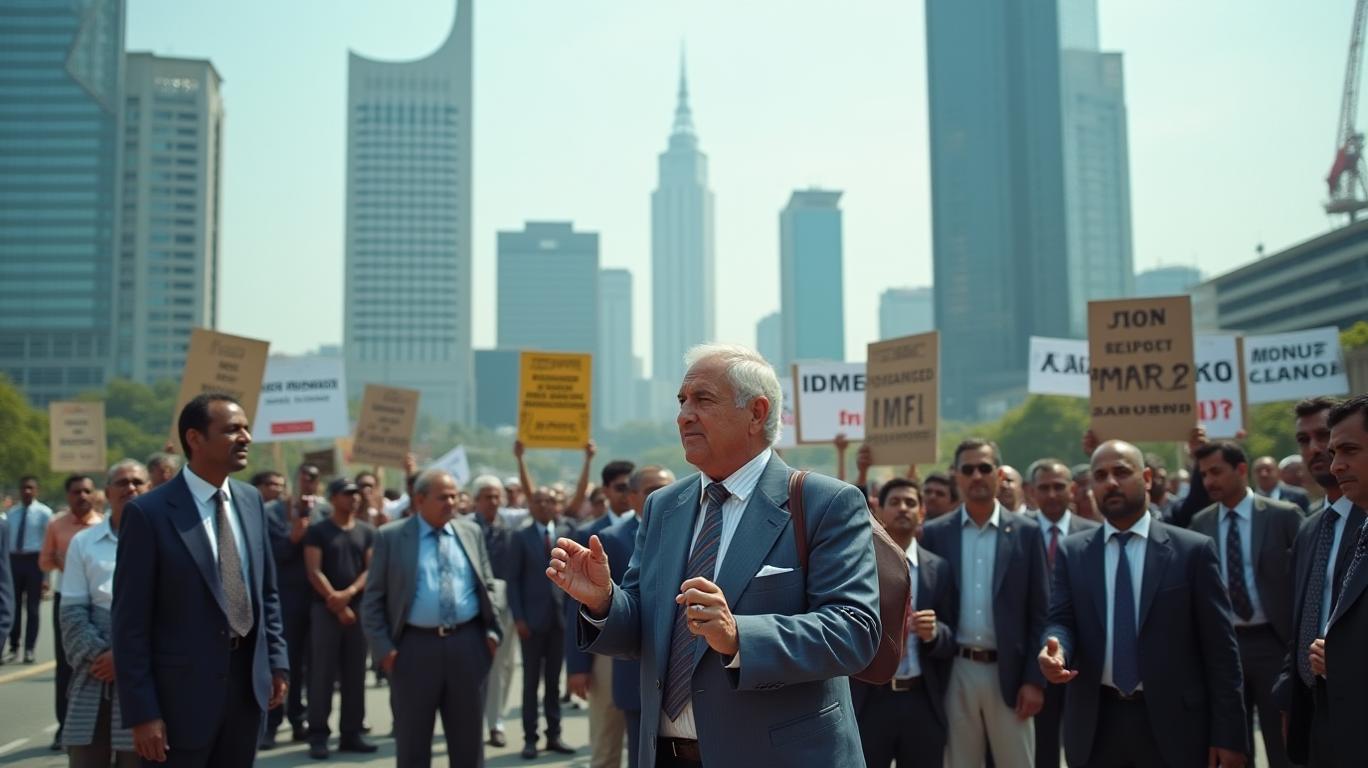Sri Lanka’s IMF Deal: A Fragile Path to Recovery Amid Structural Hurdles
The International Monetary Fund (IMF) has reached a pivotal staff-level agreement with Sri Lanka for the fourth review of its Extended Fund Facility (EFF), unlocking a potential $344 million tranche to support the island nation’s economic revival. This development marks progress in a years-long program aimed at stabilizing Sri Lanka’s finances, but unresolved structural challenges—most critically, electricity pricing reforms—loom as significant risks. Investors must weigh the positives, such as improved growth and fiscal discipline, against lingering vulnerabilities and global headwinds.

Key Achievements: A Fragile Turnaround
Sri Lanka’s economic performance to date under the IMF program has been uneven but promising. The country reported 5% GDP growth in 2024, a sharp rebound from the 2022 crisis when inflation spiked to 70%. Fiscal discipline has also shown progress, with the revenue-to-GDP ratio surging from 8.2% in 2022 to 13.5% in 2024, reflecting better tax collection and reduced fiscal deficits. Foreign reserves have stabilized at $6.5 billion by March 2025, up from crisis lows of $1.9 billion in 2022, buoyed by Central Bank foreign exchange purchases.
The IMF also noted near completion of debt restructuring, which has alleviated pressure on public finances. However, the program’s sustainability hinges on resolving two critical prior actions, which remain unresolved as of April 2025:
The Critical Hurdles: Electricity Pricing and Fiscal Risks
Electricity Cost-Recovery Pricing:
Sri Lanka’s failure to restore electricity pricing to cost-recovery levels and reinstate an automatic price adjustment mechanism poses a fiscal time bomb. Subsidized electricity has strained public finances, diverting funds from critical infrastructure projects. The IMF warns that delays here could trigger fiscal slippage, undermining macroeconomic stability.Financing Assurances Review:
Confirming multilateral partners’ financing commitments and finalizing debt restructuring details are prerequisites for IMF approval. While debt restructuring is “nearly complete,” delays here could stall the $344 million disbursement.
Global Risks and Domestic Challenges
The IMF highlights global trade policy uncertainty as a major downside risk. U.S. tariffs on Sri Lankan exports—though partially suspended—remain a concern. A 44% tariff on certain apparel exports, while reduced to 10% for three months, could stifle the key sector’s recovery. Additionally, inflation, though now negative at -2.6%, signals deflationary pressures that require close monitoring.
Domestically, corruption risks persist. The IMF urges stronger social safety nets and targeted fiscal support to protect vulnerable populations without expanding fiscal deficits.
Investment Implications: A Delicate Balance
For investors, Sri Lanka’s path offers both opportunities and pitfalls. The economy’s rebounding GDP growth and improved fiscal metrics suggest a stabilization phase, but unresolved structural reforms and external risks—like volatile global markets—limit upside potential.
- Positive Catalysts:
- Approval of the IMF tranche would provide immediate liquidity, aiding debt servicing and infrastructure spending.
A finalized debt restructuring could reduce near-term default risks.
Risks to Watch:
- Electricity Pricing Reform: A failure to implement this by late April 2025 could delay IMF disbursement and spook investors.
- Global Trade Volatility: U.S. trade policy and global demand for Sri Lankan exports (tea, rubber, apparel) remain uncertain.
Conclusion: Sri Lanka’s Recovery Hangs by a Thread
Sri Lanka’s deal with the IMF underscores its precarious yet hopeful position. With 5% GDP growth and a strengthened revenue base, the economy is healing, but the unresolved electricity pricing issue and external trade risks threaten to derail progress.
Investors should closely monitor the IMF Executive Board’s decision, expected in May 2025, and the government’s ability to finalize reforms. While the $344 million tranche would provide a short-term boost, long-term stability requires tackling systemic fiscal and governance challenges. For now, Sri Lanka’s recovery remains a tightrope walk between promise and peril.
Final Take: The IMF’s approval is critical but conditional. Investors may cautiously consider positions in Sri Lankan debt or equity if reforms materialize, but contingency planning for downside risks—including delayed disbursements or renewed fiscal slippage—is essential. The stakes are high, and the path forward demands nothing short of flawless execution.



_ed38e36c1749214633312.jpeg)






